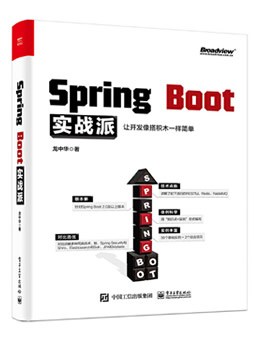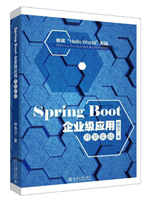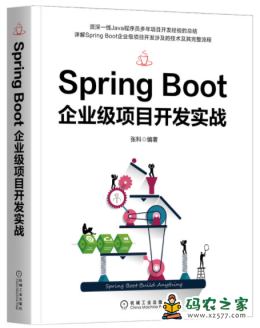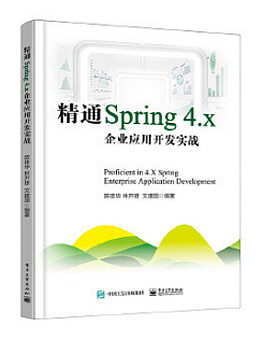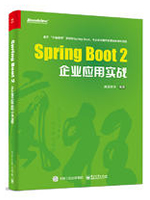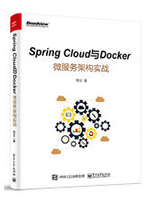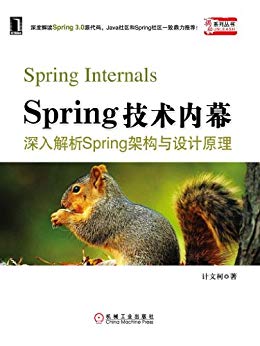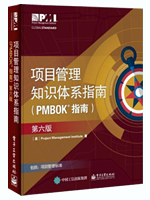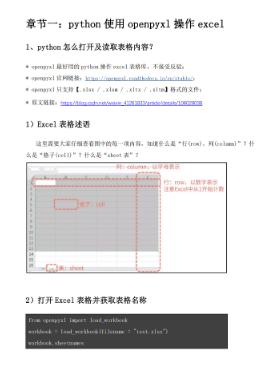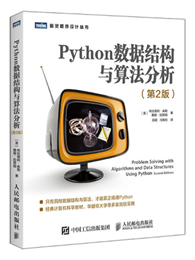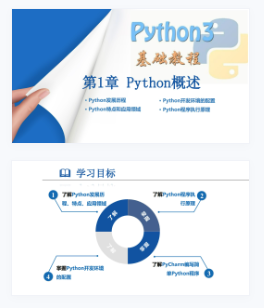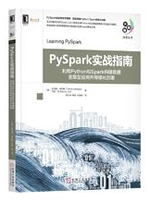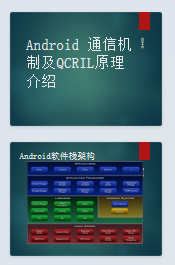给网友朋友们带来一篇相关的编程文章,网友勾悦畅根据主题投稿了本篇教程内容,涉及到Spring整合ehCache、Spring、ehCache、Spring整合ehCache相关内容,已被608网友关注,内容中涉及的知识点可以在下方直接下载获取。
Spring整合ehCache
1. 基本介绍
EhCache 是一个纯Java的进程内缓存框架,具有快速、精干等特点,是Hibernate中默认Cache方式。
Ehcache是一种广泛使用的开源Java分布式缓存。
它具有内存和磁盘存储,缓存加载器,缓存扩展,缓存异常处理程序等特点。
Spring 提供了对缓存功能的抽象:即允许绑定不同的缓存解决方案(如Ehcache),但本身不直接提供缓存功能的实现。它支持注解方式使用缓存,非常方便。
2. 主要的特性
- 1、快速
- 2、简单
- 3、多种缓存策略
- 4、缓存数据有两级:内存和磁盘,因此无需担心容量问题
- 5、缓存数据会在虚拟机重启的过程中写入磁盘
- 6、可以通过RMI、可插入API等方式进行分布式缓存
3. 集成
可以单独使用,一般在第三方库中被用到的比较多(如mybatis、shiro等)。
ehcache 对分布式支持不够好,多个节点不能同步,通常和redis一块使用。
一般使用ehcache做本地缓存,解决Redis单点压力过大等问题。
4. ehcache 和 redis 比较
- ehcache直接在jvm虚拟机中缓存,速度快,效率高;但是缓存共享麻烦,集群分布式应用不方便。
- redis是通过socket访问到缓存服务,效率比ecache低,比数据库要快很多。
- ehcache也有缓存共享方案,不过缓存共享复杂,维护不方便;
5. ehcache 与 Spring整合
①. pom.xml 引入spring和ehcache
<project xmlns="http://maven.apache.org/POM/4.0.0" xmlns:xsi="http://www.w3.org/2001/XMLSchema-instance" xsi:schemaLocation="http://maven.apache.org/POM/4.0.0 http://maven.apache.org/xsd/maven-4.0.0.xsd">
<modelVersion>4.0.0</modelVersion>
<groupId>com.mengdee</groupId>
<artifactId>ehcache</artifactId>
<version>0.0.1-SNAPSHOT</version>
<properties>
<project.build.sourceEncoding>UTF-8</project.build.sourceEncoding>
<junit.version>4.10</junit.version>
<spring.version>4.2.3.RELEASE</spring.version>
</properties>
<dependencies>
<dependency>
<groupId>junit</groupId>
<artifactId>junit</artifactId>
<version>${junit.version}</version>
<scope>test</scope>
</dependency>
<dependency>
<groupId>org.springframework</groupId>
<artifactId>spring-test</artifactId>
<version>${spring.version}</version>
<scope>test</scope>
</dependency>
<!-- springframework -->
<dependency>
<groupId>org.springframework</groupId>
<artifactId>spring-webmvc</artifactId>
<version>${spring.version}</version>
</dependency>
<dependency>
<groupId>org.springframework</groupId>
<artifactId>spring-core</artifactId>
<version>${spring.version}</version>
</dependency>
<dependency>
<groupId>org.springframework</groupId>
<artifactId>spring-context</artifactId>
<version>${spring.version}</version>
</dependency>
<dependency>
<groupId>org.springframework</groupId>
<artifactId>spring-context-support</artifactId>
<version>${spring.version}</version>
</dependency>
<dependency>
<groupId>net.sf.ehcache</groupId>
<artifactId>ehcache</artifactId>
<version>2.10.3</version>
</dependency>
</dependencies>
<repositories>
<repository>
<id>aliyun</id>
<name>aliyun</name>
<url>http://maven.aliyun.com/nexus/content/groups/public</url>
</repository>
</repositories>
</project>②applicationContext.xml中引入ehcache配置
<!-- ehcache配置 --> <import resource="classpath*:conf/spring/ehcache-mamage.xml" />
③ehcache-mamage.xml 配置文件
<beans xmlns="http://www.springframework.org/schema/beans" xmlns:xsi="http://www.w3.org/2001/XMLSchema-instance" xmlns:cache="http://www.springframework.org/schema/cache" xsi:schemaLocation="http://www.springframework.org/schema/beans http://www.springframework.org/schema/beans/spring-beans-3.0.xsd http://www.springframework.org/schema/cache http://www.springframework.org/schema/cache/spring-cache-3.1.xsd"> <!-- 启用缓存注解开关 --> <cache:annotation-driven /> <bean id="cacheManager" class="org.springframework.cache.ehcache.EhCacheCacheManager"> <property name="cacheManager" ref="ehcacheManager"/> </bean> <!-- ehCache 配置管理器 --> <bean id="ehcacheManager" class="org.springframework.cache.ehcache.EhCacheManagerFactoryBean"> <property name="configLocation" value="classpath:conf/ehcache.xml" /> <!--true:单例,一个cacheManager对象共享;false:多个对象独立 --> <property name="shared" value="true" /> </bean> </beans>
④ehcache.xml配置文件
<?xml version="1.0" encoding="UTF-8"?> <ehcache xmlns:xsi="http://www.w3.org/2001/XMLSchema-instance" xsi:noNamespaceSchemaLocation="http://ehcache.org/ehcache.xsd" updateCheck="false"> <!-- name:缓存区名称,用以区别缓存区,必须唯一 maxEntriesLocalHeap:设置缓存在本地内存中最大缓存项数量,0表示无限,等效于旧版本中的maxElementsInMemory属性 eternal:设置缓存项是否为永久的。如果设置为true,缓存项的过期设置将被忽略,缓存项永不过期 timeToIdleSeconds:设置一个缓存项在过期前的闲置时间。即一个缓存项在其过期前,两次访问间隔的最大时间。仅在缓存项为非永久时有效。0表示不限闲置时间,默认为0 timeToLiveSeconds:设置一个缓存项在过期前的生存时间。即从缓存项创建到过期的最大时间。仅在缓存项为非永久时有效。0表示不限生存时间,默认为0 overflowToDisk:当内存中对象数量达到maxEntriesLocalHeap时,Ehcache将会对象写到磁盘中 copyOnRead:当缓存项被读出时,是否返回一份它的拷贝(返回对象是缓存中对象的拷贝)。默认false copyOnWrite:当缓存项被写入时,是否写入一份它的拷贝(写入缓存的是写入对象的拷贝)。默认false memoryStoreEvictionPolicy:当缓存项达到maxEntriesLocalHeap限制时,剔除缓存项的策略。默认为LRU(Least Recently Used)。 其他的策略有:FIFO(First In First Out)和LFU(Less Frequently Used) --> <cache name="cmApplyInfoDataCache" maxEntriesLocalHeap="3600" timeToIdleSeconds="20" timeToLiveSeconds="86400" eternal="false" overflowToDisk="false" copyOnRead="true" copyOnWrite="true" memoryStoreEvictionPolicy="LRU"> <searchable/> <persistence strategy="none"/> </cache> </ehcache>
⑤测试EhCache缓存 java代码实现
@RequestMapping("/testSpringEhCache.action")
@ResponseBody
public Map<String, Object> testSpringEhCache(HttpServletRequest request) {
Map<String, Object> params = baseController.getParams(request);
String supplierCode = MapUtils.getString(params, "supplierCode", "");
String productCode = MapUtils.getString(params, "productCode", "");
CmpProductSingleCommonEntity entity = orderDataTempService.queryProductSingleCommon(supplierCode, productCode);
return CmUtils.convertDTOToMap(entity);
}
@Override
@Cacheable(value = "cmApplyInfoDataCache", key = "'cmp_cmApplyInfo_cache_key_'+#supplierCode+'_'+#productCode")
public CmpProductSingleCommonEntity queryProductSingleCommon(String supplierCode, String productCode) {
return cmpProductSingleCommonDAO.queryProductSingleCommon(supplierCode, productCode);
}5. Spring缓存标签
实现原理:
Spring对缓存的支持类似于对事务的支持。
首先使用注解标记方法,相当于定义了切点,然后使用Aop技术在这个方法的调用前、调用后获取方法的入参和返回值,进而实现了缓存的逻辑。
①@Cacheable标签
表明所修饰的方法是可以缓存的:当第一次调用这个方法时,它的结果会被缓存下来,在缓存的有效时间内,以后访问这个方法都直接返回缓存结果,不再执行方法中的代码段。
这个注解可以用condition属性来设置条件,如果不满足条件,就不使用缓存能力,直接执行方法。
可以使用key属性来指定key的生成规则。
@Cacheable 支持如下几个参数:
value:缓存位置名称,不能为空,如果使用EHCache,就是ehcache.xml中声明的cache的name, 指明将值缓存到哪个Cache中key:缓存的key,默认为空,既表示使用方法的参数类型及参数值作为key,支持SpEL,如果要引用参数值使用井号加参数名,如:#userId,
一般来说,我们的更新操作只需要刷新缓存中某一个值,所以定义缓存的key值的方式就很重要,最好是能够唯一,因为这样可以准确的清除掉特定的缓存,而不会影响到其它缓存值 ,
本例子中使用实体加冒号再加ID组合成键的名称,如"user:1"、"order:223123"等
condition:触发条件,只有满足条件的情况才会加入缓存,默认为空,既表示全部都加入缓存,支持SpEL
举例如下:
入参为单个字符串的场景:
// 将缓存保存到名称为UserCache中,键为"user:"字符串加上userId值,如 'user:1'
@Cacheable(value = "UserCache", key = "'user:' + #userId")
public User findById(String userId) {
return new User("1", "mengdee");
} 入参为多个字符串的场景:
@Cacheable(value = "cmApplyInfoDataCache", key = "'cmp_cmApplyInfo_cache_key_'+#supplierCode+'_'+#productCode")
public CmpProductSingleCommonEntity queryProductSingleCommon(String supplierCode, String productCode) {
return cmpProductSingleCommonDAO.queryProductSingleCommon(supplierCode, productCode);
}入参为Map场景:
@Cacheable(value="supplierInfoDataCache", key = "'params:'+#supplierCode")
public List<Map<String, Object>> queryDataList(Map<String, Object> params) {
return cmpProductSingleCommonDAO.querySupplierIsPublishCmBySupplierCode(params);
}②@CacheEvict标签
与@Cacheable功能相反,@CacheEvict表明所修饰的方法是用来删除失效或无用的缓存数据。
@CacheEvict 支持如下几个参数:
value:缓存位置名称,不能为空,同上key:缓存的key,默认为空,同上condition:触发条件,只有满足条件的情况才会清除缓存,默认为空,支持SpELallEntries:true表示清除value中的全部缓存,默认为false
//清除掉UserCache中某个指定key的缓存
@CacheEvict(value="UserCache",key="'user:' + #userId")
public void removeUser(User user) {
System.out.println("UserCache"+user.getUserId());
}
//清除掉UserCache中全部的缓存
@CacheEvict(value="UserCache", allEntries=true)
public final void setReservedUsers(String[] reservedUsers) {
System.out.println("UserCache deleteall");
}6. ehcache.xml 配置说明
name
缓存区名称,用以区别缓存区,必须唯一
maxEntriesLocalHeap
设置缓存在本地内存中最大缓存项数量,0表示无限,等效于旧版本中的maxElementsInMemory属性
eternal
设置缓存项是否为永久的。如果设置为true,缓存项的过期设置将被忽略,缓存项永不过期
timeToIdleSeconds
设置一个缓存项在过期前的闲置时间。即一个缓存项在其过期前,两次访问间隔的最大时间。仅在缓存项为非永久时有效。0表示不限闲置时间,默认为0
timeToLiveSeconds
设置一个缓存项在过期前的生存时间。即从缓存项创建到过期的最大时间。仅在缓存项为非永久时有效。0表示不限生存时间,默认为0
overflowToDisk
当内存中对象数量达到maxEntriesLocalHeap时,Ehcache将会对象写到磁盘中
copyOnRead
当缓存项被读出时,是否返回一份它的拷贝(返回对象是缓存中对象的拷贝)。默认false
copyOnWrite
当缓存项被写入时,是否写入一份它的拷贝(写入缓存的是写入对象的拷贝)。默认false
memoryStoreEvictionPolicy
当缓存项达到maxEntriesLocalHeap限制时,剔除缓存项的策略。默认为LRU(Least Recently Used)。
其他的策略有:FIFO(First In First Out)和LFU(Less Frequently Used)
实例:
<cache name="cmApplyInfoDataCache" maxEntriesLocalHeap="3600" timeToIdleSeconds="20" timeToLiveSeconds="86400" eternal="false" overflowToDisk="false" copyOnRead="true" copyOnWrite="true" memoryStoreEvictionPolicy="LRU"> <searchable/> <persistence strategy="none"/> </cache>
总结
以上为个人经验,希望能给大家一个参考,也希望大家多多支持码农之家。

